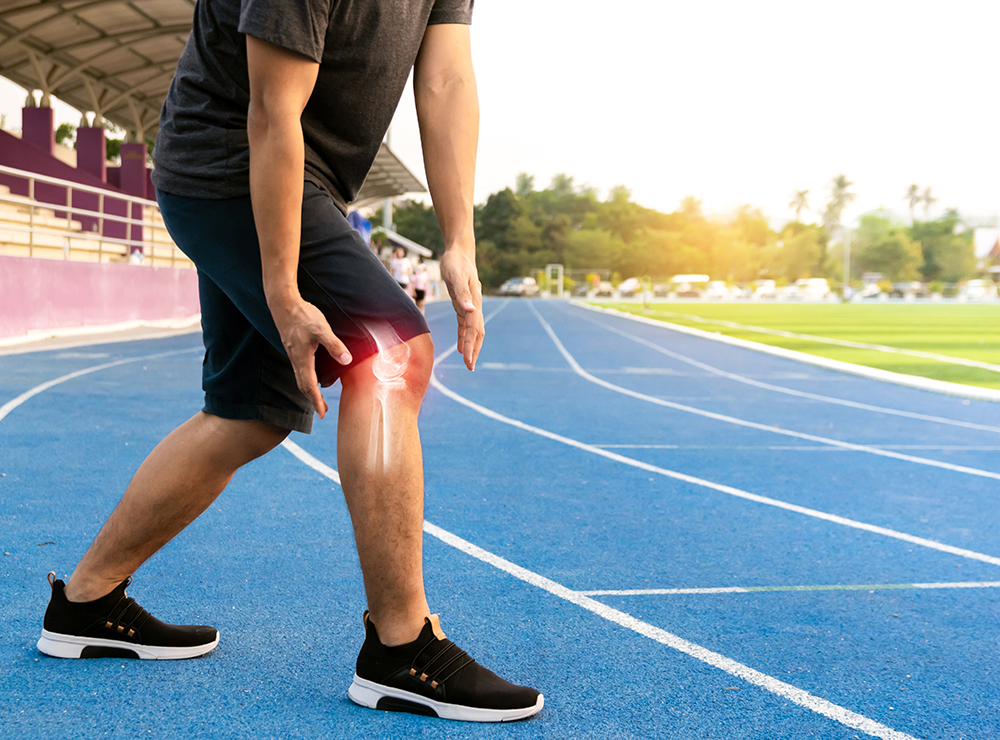|
Listen the Post
Getting your Trinity Audio player ready...
|
1. What are the most common sports injuries?
Sports injuries can vary depending on the type of sport, level of activity, and individual factors. However, there are several common sports injuries that athletes frequently encounter. The most common sports injuries include:
- Sprains: Sprains occur when ligaments, which are bands of tissue that connect bones, are stretched or torn. They commonly affect the ankles, knees, and wrists. Important information:
- Sprains are often caused by sudden twisting or turning movements.
- Rest, ice, compression, and elevation (RICE) is a common treatment for sprains.
- Rehabilitation exercises are crucial for restoring strength and mobility.
- Strains: Strains are injuries to muscles or tendons, which are fibrous tissues that connect muscles to bones. They commonly occur in the hamstrings, groin, and back. Important information:
- Strains are often caused by overstretching or overuse of muscles.
- Rest, applying ice, compression, and elevation can help in the initial treatment of strains.
- Gradual return to activity and strengthening exercises are important for a full recovery.
- Fractures: Fractures refer to broken bones and can result from direct impact, excessive force, or repetitive stress on the bone. Important information:
- Fractures can be categorized as stable (bones remain aligned), displaced (bones are misaligned), or open (bone breaks the skin).
- Immediate medical attention is necessary for fractures, and treatment may involve casting, immobilization, or surgery.
- Rehabilitation and physical therapy are crucial for regaining strength and mobility.
2. How can sports injuries be prevented?
Prevention plays a crucial role in minimizing the risk of sports injuries. While it may not be possible to prevent all injuries, adopting certain measures can significantly reduce the likelihood of getting injured. Here are some important strategies for preventing sports injuries:
- Warm-up and stretching: Prior to engaging in physical activity, it is essential to warm up the body and perform dynamic stretches. This helps increase blood flow to the muscles, improves flexibility, and prepares the body for the demands of the sport. Important information:
- Warm-up exercises should include movements that mimic the activity you will be performing.
- Stretching should be done after the warm-up or at the end of the exercise session when the muscles are warm.
- Avoid bouncing while stretching, as it can lead to injury.
- Proper technique and form: Learning and using correct techniques and form in sports can significantly reduce the risk of injuries. Coaches and trainers can provide guidance and ensure athletes are performing movements correctly. Important information:
- Seek professional instruction to learn the proper techniques for your sport.
- Focus on maintaining good posture and alignment during movements.
- Gradually increase the intensity and duration of training to allow the body to adapt.
- Use appropriate protective gear: Wearing appropriate protective gear can help prevent or minimize the severity of injuries. The type of gear needed may vary depending on the sport, but common examples include helmets, mouthguards, goggles, and padding. Important information:
- Ensure that protective gear fits properly and is in good condition.
- Replace damaged or worn-out gear to maintain its effectiveness.
- Different sports have specific gear requirements, so research and follow the recommendations for your sport.
3. What should I do if I sustain a sports injury?
If you sustain a sports injury, it’s essential to take appropriate steps to ensure proper care and promote recovery. Here’s what you should do:
- Rest and immobilize: Stop the activity immediately and rest the injured area. Immobilize the injured part, if necessary, to prevent further damage. Important information:
- Avoid putting weight or strain on the injured area.
- Use crutches or a brace, if needed, to support and protect the injured limb.
- Immobilization can help stabilize the injury and prevent further harm.
- Apply ice: Applying ice to the injured area can help reduce pain, swelling, and inflammation. Use a cold pack or wrap ice in a thin towel and apply it to the affected area for about 15-20 minutes at a time. Important information:
- Avoid applying ice directly to the skin to prevent frostbite; always use a protective barrier.
- Ice can be applied multiple times throughout the day, especially during the first 48 to 72 hours.
- Don’t exceed the recommended duration for ice application, as prolonged exposure can be harmful.
- Seek medical attention: Depending on the severity of the injury, it may be necessary to seek medical attention. A healthcare professional can assess the injury, provide a proper diagnosis, and recommend appropriate treatment. Important information:
- Consult a doctor or sports medicine specialist if the injury is severe, causes intense pain, or affects your ability to move.
- Medical professionals can determine the extent of the injury through physical examination, imaging tests (such as X-rays or MRI), or other diagnostic procedures.
- Timely medical intervention can prevent complications and promote a faster recovery.
4. What is the typical recovery time for sports injuries?
The recovery time for sports injuries varies depending on the type and severity of the injury, as well as individual factors such as age, overall health, and adherence to treatment and rehabilitation. While each injury is unique, here are some general guidelines:
- Minor injuries: Mild sprains, strains, or bruises may heal within a few days to a couple of weeks with proper rest and self-care. Important information:
- Following the RICE (Rest, Ice, Compression, Elevation) method can aid in the recovery process.
- Gradually reintroduce activity once the pain and swelling have subsided.
- Rehabilitation exercises may be necessary to regain full strength and function.
- Moderate injuries: More significant sprains, strains, or fractures may require several weeks to a few months for complete recovery. Important information:
- Treatment may involve immobilization, physical therapy, and possibly medication for pain and inflammation.
- Follow the healthcare professional’s recommendations regarding rest, activity modification, and rehabilitation exercises.
- Regular follow-up appointments can ensure progress and necessary adjustments to the treatment plan.
- Severe injuries: Severe fractures, ligament tears, or surgical interventions may require several months to a year or more for a full recovery. Important information:
- Surgery may be necessary to repair or reconstruct damaged tissues or bones.
- Extensive rehabilitation, including physical therapy and strength training, is crucial for restoring function and preventing long-term complications.
- Compliance with the rehabilitation program and regular check-ups with healthcare professionals is essential for optimal recovery.
It’s important to note that these are general estimates, and the actual recovery time can vary significantly depending on individual circumstances. It’s best to consult with a healthcare professional for an accurate assessment and personalized prognosis.
5. How can I prevent recurrent sports injuries?
Experiencing a sports injury once increases the likelihood of future injuries in the same area. However, there are steps you can take to minimize the risk of recurrent injuries:
- Complete rehabilitation: Fully engage in the prescribed rehabilitation program after an injury to ensure proper healing, regain strength, and restore mobility. Important information:
- Adhere to the recommended exercises, stretching routines, and guidelines provided by your healthcare professional or physical therapist.
- Gradually progress through the rehabilitation program, as rushing the process can increase the risk of re-injury.
- Communicate any concerns or difficulties during the rehabilitation process with your healthcare professional for appropriate guidance and adjustments.
- Maintain strength and flexibility: Even after recovery, it’s important to continue with a regular exercise routine that focuses on building strength, flexibility, and stability. Important information:
- Include exercises that target the specific muscles and areas vulnerable to injury.
- Incorporate both cardiovascular exercises for overall fitness and strength training to enhance muscle support.
- Implement stretching and flexibility exercises to improve range of motion and prevent muscle imbalances.
- Practice proper technique: Ensure you are using the correct form and technique when participating in sports or physical activities. Important information:
- Seek guidance from coaches or trainers to ensure proper technique in your chosen sport.
- Focus on maintaining good posture, body alignment, and balance during movements.
- Avoid overexertion and pushing beyond your limits, as fatigue and compromised form can lead to injury.
- Listen to your body: Pay attention to any warning signs or discomfort during physical activity. If you experience pain, fatigue, or unusual sensations, it’s important to listen to your body and take appropriate action. Important information:
- Rest when needed and allow your body time to recover between training sessions.
- Don’t ignore persistent or worsening pain, as it may indicate an underlying issue.
- Consult with a healthcare professional if you have any concerns about your physical well-being or are experiencing recurrent pain.
- Gradual progression and proper warm-up: When returning to sports or increasing activity levels, follow a gradual progression plan and always begin with a proper warm-up. Important information:
- Gradually increase the intensity, duration, and frequency of your workouts or sports activities to allow your body to adapt.
- Warm-up exercises should include dynamic movements that mimic the activity you will be performing.
- Incorporate adequate rest periods and recovery days into your training schedule to prevent overuse injuries.
By following these preventive measures, you can significantly reduce the risk of recurrent sports injuries and maintain a healthier, more resilient body for long-term athletic participation.
Remember, while these guidelines provide helpful information, it’s important to consult with healthcare professionals, such as sports medicine specialists or physical therapists, for personalized advice and recommendations based on your specific needs and circumstances.

